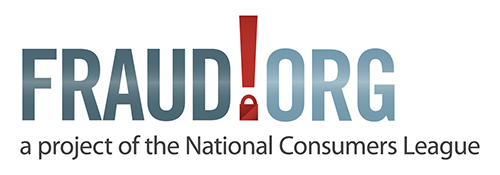Supply chain disruptions are likely to be the gift that keeps on giving for scammers this holiday season
Record-breaking backlogs at the nation’s ports this fall are a significant contributor to the inflation that is hitting Americans right in the pocketbook recently. And with the disruptions likely to last into 2022, it could be harder than ever for consumers to get sought-after toys and must-have gifts this holiday season.
Unfortunately, consumers’ eagerness to get their hands on PlayStation 5’s, L.O.L. Surprise! Dolls, and Baby Yodas — combined with global supply chain disruptions — are likely to play right into scammers’ hands. Each year, fraudsters set up fake websites, run bogus online auctions, or post ads on Craigslist and social media claiming to be able to obtain and resell sought-after gifts. Internet merchandise scams regularly top Fraud.org’s annual Top Ten Scams list. This year, with the supply chain disruptions making toys scarcer than ever, parents are likely to be even more vulnerable to these scams.
Not getting the gift you were searching for could be the least of your problems if you fall victim to a holiday shopping scam. To make matters worse, many victims also end up becoming a victim of a potentially more devastating fraud: ID theft. A 2018 survey by Experian found that 8 percent of consumers reported being a victim of identity theft during the holiday season, with 43 percent of those victims saying that the theft happened while shopping online. As millions more Americans continue to shop online due to the COVID-19 pandemic, the threat of identity fraud during the holiday shopping season has only grown.
To stay safe this holiday season, Fraud.org recommends shoppers take the following steps:
- Steep discounts = Too good to be true. If your child is desperate for an XBOX Series X (retail price: $499 and up) and you see one online at a steep discount, chances are that it’s a scam. Whether you’re searching for an impossible-to-find toy or just a pair of slippers for your spouse, the safest places to buy are with retailers you’ve purchased from in the past.
- Watch out for emails or text messages promising must-have gifts or discounts. Email and text message phishing scams are a tried-and-true method for scammers to find victims. Don’t click on links or attachments (such as those pointing you to “discount codes”), as these can infect your computer or cell phone with malware or even encrypt your files with ransomware.
- Beware of counterfeit toys. According to the Toy Association, nearly 1 in 5 (19 percent) of parents report that their child has received a counterfeit or knock-off toy purchased online. Counterfeit toys are not made in adherence with strict federal toy safety standards, increasing the potential for dangerous products to enter your home. You can reduce your risk of buying a dangerous toy by shopping with brick-and-mortar retailers and trusted online marketplaces.
- Credit cards are the safest way to pay. Regardless of where you buy toys, paying with a credit card gives you dispute resolution rights in case the transaction goes bad. If a seller asks you to pay with a gift card, via a peer-to-peer payment app, wire transfer, or even cash, you are likely to be out of luck if the gift never arrives or is not in the condition you expected.
Scams can strike anyone at any time of the year. If you suspect that you or someone you know has become a victim of this scam or any other fraud, report it at once. You can file a complaint at Fraud.org via our online complaint form. We’ll share your complaint with our network of law enforcement and consumer protection agency partners who can investigate and help put fraudsters behind bars.









